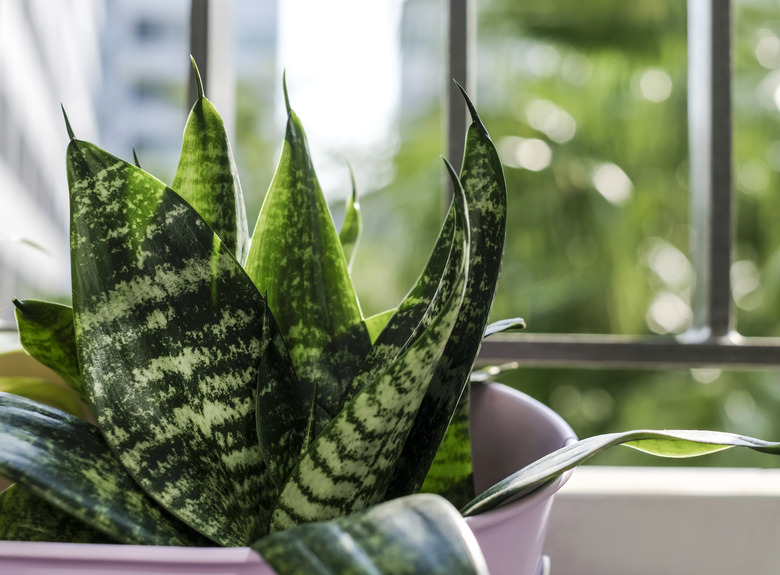How To Remove The Offsets From A Mother-In-Law's Tongue Houseplant
With stiff, sword-like leaves and a reputation for being tough as nails, it is no wonder the Dracaena trifasciata was given the common name of mother-in-law's tongue. It is also known as the snake plant and is both resilient and popular. One of the ways these plants propagate is through growing small side shoots that can be separated from the parent to create a new plant.
Meet the Mother-in-Law's Tongue
Is this plant indestructible? That is certainly its reputation, and it lives up to it by tolerating days, weeks, and even months of neglect without batting an eye or losing the pleasant green and yellow striping of its leaves. The stemless plant grows in bright light, medium light, and even extremely low light, and is so drought tolerant that it only needs watering every two months in winter. Its upright leaves can grow to 8 feet tall.
If you thought this plant went by the botanical name of Sansevieria trifasciata, you are not wrong. But the scientists changed their minds in 2017 and declared it a member of the Dracaena family. It also has a variety of other common names, including the snake plant, viper's bowstring hemp, and St. George's sword. According to NASA, it is one of the best plants for cleaning toxins from the air.
Propagate Mother-in-Law's Tongue
This perky green plant can be propagated in a variety of ways, but none is quite as easy as separating the offsets from the mother plant. The plant produces small "baby" plants that look like little shoots beside the parent's leaves. Generally, it only does this when it is rootbound.
The steps to remove the offset and give it a pot of its own are quite simple. Remove the parent plant from its pot and inspect it. Brush away enough soil so that you can see where the pups are attached to the parent. Free an offset by locating its roots and cutting off the pup with a garden knife, while including as many roots as possible with it. Plant the offset in cactus potting soil.
Care for Mother-in-Law's Tongue
To give your plant the best care — both parent and separated pups — don't push it to its limits of tolerance. Yes, these plants can grow in a dark closet, but put them where they get indirect but steady light with some direct sun. Yes, they can go months without water, but don't make them wait that long. Let the soil dry out well between waterings however, since overwatering will kill this plant faster than anything else.
